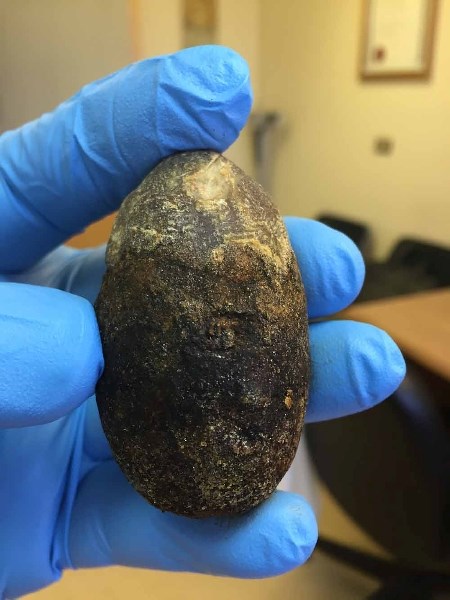The source of one woman’s two decades of abdominal distress was discovered last Thursday when Dr. Iftikhar Ahmad was performing surgery to remove a gallstone.
“It’s a very interesting case,” he said, adding by the end of the surgery, he made a record-breaking – at least locally - find. “I removed the largest stone in St. Paul history, I would say.”
The patient had given the doctor a “vague history of abdominal pain,” according to Iftikhar, with the pain starting in 1992 while she was pregnant with her first child.
“She never talked to a family physician, she had just been taking pain medication.”
However, when she sought medical advice, an ultrasound was ordered and performed in July of this year, showing a large gallstone, measuring possibly 3.2 centimetres across.
On Nov. 12, she went in for laparoscopic surgery, a minimally invasive surgery that involves making four small openings in the abdomen, rather than one larger incision.
In this case, Iftikhar noted there was a lot of tissue around the gallbladder that he had to work to get through, as the body tried to repair the source of distress.
“I had to work hard to take her gallbladder out,” he said, noting that the organ was very tense and distended. As he normally does when this is an issue, he says he “tried to decompress,” using a needle to inflate the abdominal hole and make the gallbladder looser. Since the gallbladder’s purpose is to collect and concentrate bile produced by the liver, bile normally is released, but in this case, nothing came out and the gallbladder would not decompress.
“When we opened up the gallbladder, everybody was surprised,” he said, explaining he had never seen a gallstone so large, with the measurement showing that the gallstone was about six centimetres across. “It’s just like a regular Easter egg.”
He was so amazed in fact, that he asked the patient if she would consent to sharing the story and the photos taken of the gallstone, to which she agreed.
Part of the reason Iftikhar felt people should know about the case is one of public awareness. Sometimes, people may want to avoid surgery, but he said the problem of gallstones is quickly assessed using ultrasound, and that laparoscopic surgery is the “gold standard” for dealing with the issue, which is a simple day surgery with minimal post-operative pain, with faster recovery for patients.
Although risk factors include being female, over 40 and being overweight, he notes anyone, of either sex or even at younger ages, can contract gallstones.
If people are experiencing frequent abdominal pain, particularly on their right side upper abdomen, gallstones could be an issue, he said.
“They should see their doctor, not just take medication,” he said.



